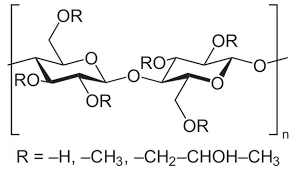
ਦਸੰ. . 11, 2024 10:47 Back to list
Hydroxyethyl Cellulose Viscosity Characteristics at Varying Concentrations for Improved Formulations
Hydroxyethyl Cellulose Viscosity and Concentration
Hydroxyethyl cellulose (HEC) is a non-ionic, water-soluble polymer derived from cellulose. It is widely used in various industries due to its unique rheological properties, particularly its ability to form viscous solutions. This characteristic is critical in applications ranging from pharmaceuticals and cosmetics to construction and food products. Understanding the relationship between viscosity and concentration of HEC is essential for optimizing its use in these fields.
What is Hydroxyethyl Cellulose?
HEC is produced by the etherification of cellulose, resulting in a polymer that retains the fundamental structure of cellulose while gaining hydrophilic properties. Its hydrophilicity allows HEC to dissolve in water, forming clear, viscous solutions, making it a valuable thickening agent. Additionally, it is compatible with various formulations, including ionic and non-ionic ingredients, enhancing its utility in diverse applications.
Importance of Viscosity
Viscosity is a measure of a fluid's resistance to flow. For HEC, viscosity plays a crucial role in determining the performance of formulations. In cosmetic creams, for instance, a higher viscosity might enhance the product's spreadability and stability. In pharmaceuticals, viscosity affects the bioavailability of active ingredients and the ease of administration. In construction, HEC's viscosity impacts the workability of cement and mortar, influencing the overall quality and longevity of building materials.
Relationship Between Viscosity and Concentration
The relationship between HEC’s viscosity and its concentration is nonlinear. As the concentration of HEC in a solution increases, the viscosity also increases, but not at a constant rate. This phenomenon can be explained by the molecular interactions within the polymer chains and the behavior of solvent molecules.
At low concentrations, HEC molecules are relatively far apart, leading to less interaction and lower viscosity. However, as the concentration increases, the polymer chains begin to entangle with one another, forming a network that hinders the flow of the solution, thus significantly increasing viscosity. This entanglement effect becomes pronounced as the concentration crosses a critical threshold, often leading to a dramatic rise in viscosity.
hydroxyethyl cellulose viscosity concentration

Factors Influencing Viscosity
1. Molecular Weight The molecular weight of HEC significantly influences viscosity. Higher molecular weight HEC generally results in greater viscosity at the same concentration compared to lower molecular weight variants. This is due to the longer polymer chains that can interact more effectively and entangle with each other, increasing the solution's resistance to flow.
2. Temperature Temperature alterations have a profound impact on solution viscosity. Typically, increasing the temperature reduces viscosity as kinetic energy allows the polymer chains to move more freely, reducing entanglement. However, this effect is reversible; upon cooling, viscosity increases again as molecular movement slows down.
3. Ionic Strength The presence of electrolytes in solution can affect the viscosity of HEC. High ionic strength can screen electrostatic interactions between polymer chains, potentially leading to reduced viscosity. Conversely, in low ionic strength solutions, HEC chains may be more extended, resulting in increased viscosity.
4. pH Level The pH of the solution can also play a critical role in viscosity. Variations in pH can alter the charge distribution on the HEC molecules, influencing their solubility and interactions with water, thereby affecting viscosity.
Applications of HEC
The unique viscosity properties of HEC allow it to be employed across a variety of sectors. In the pharmaceutical industry, it is commonly used as a binder and thickener in drug formulations. In the cosmetics arena, it acts as a stabilizer in lotions, creams, and hair products. The construction industry benefits from HEC as a water-retention agent in mortars and plasters, improving workability and adhesion. Furthermore, in the food industry, it is utilized as a thickening agent and stabilizer in sauces and dressings.
Conclusion
Hydroxyethyl cellulose is an invaluable polymer with properties that can be tailored for specific applications through manipulation of its concentration and the conditions of its use. Understanding the relationship between viscosity and concentration is crucial for formulators seeking to optimize the performance of products that incorporate HEC. As industries continue to evolve, the demand for versatile ingredients like HEC is likely to grow, reinforcing its significance in modern formulations.
-
Versatile Hpmc Uses in Different Industries
NewsJun.19,2025
-
Redispersible Powder's Role in Enhancing Durability of Construction Products
NewsJun.19,2025
-
Hydroxyethyl Cellulose Applications Driving Green Industrial Processes
NewsJun.19,2025
-
Exploring Different Redispersible Polymer Powder
NewsJun.19,2025
-
Choosing the Right Mortar Bonding Agent
NewsJun.19,2025
-
Applications and Significance of China Hpmc in Modern Industries
NewsJun.19,2025







